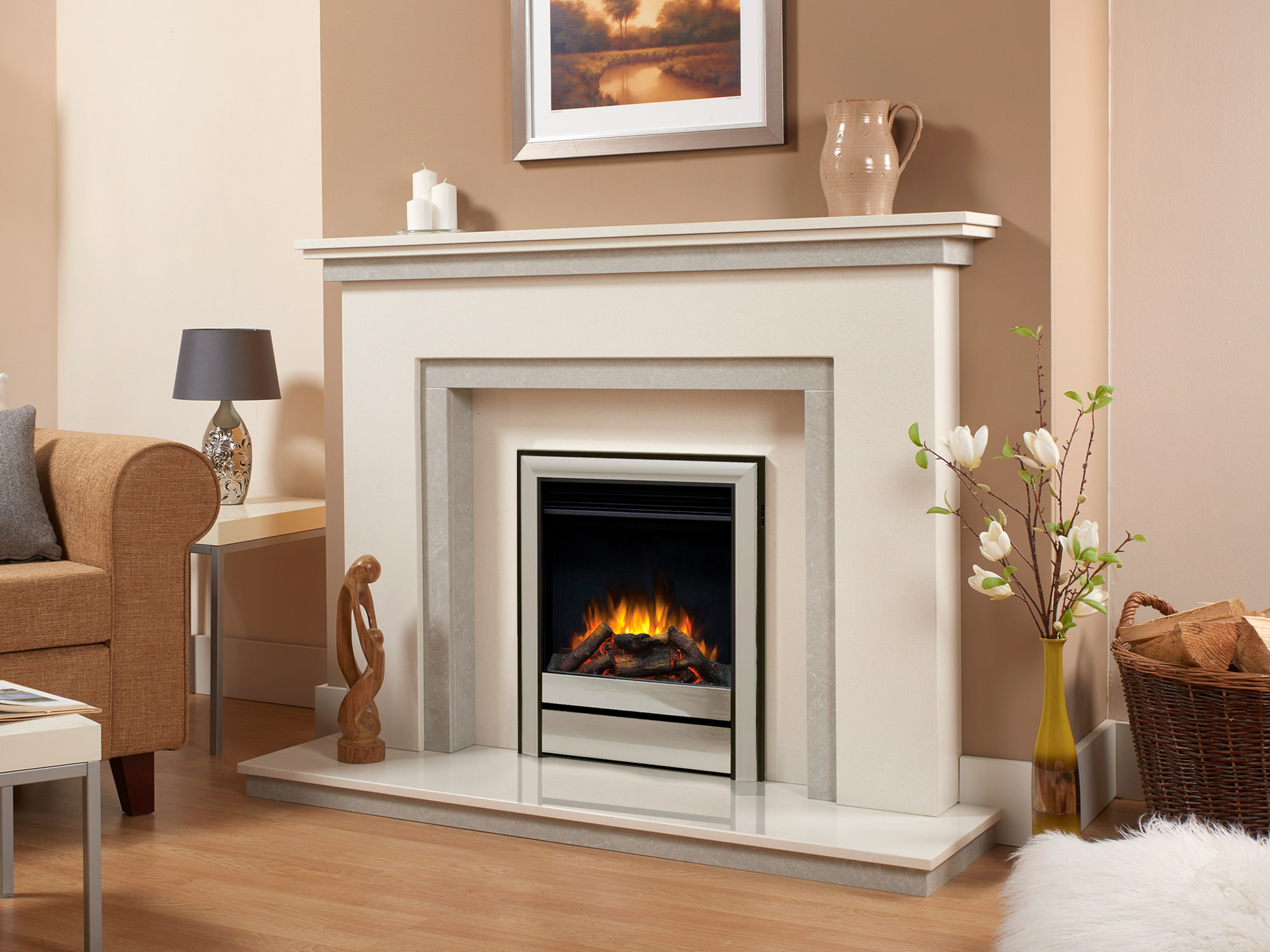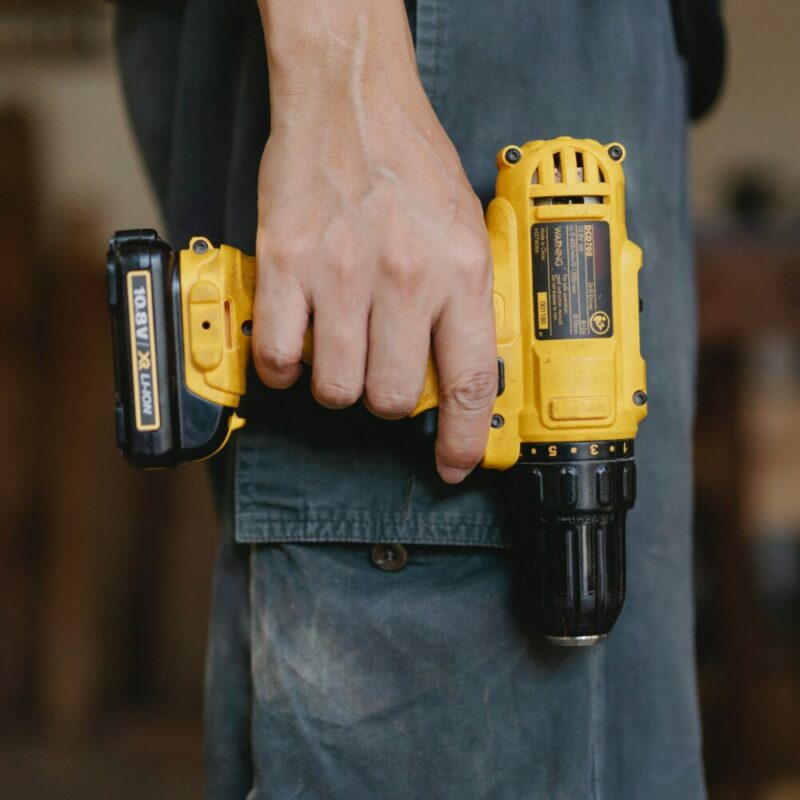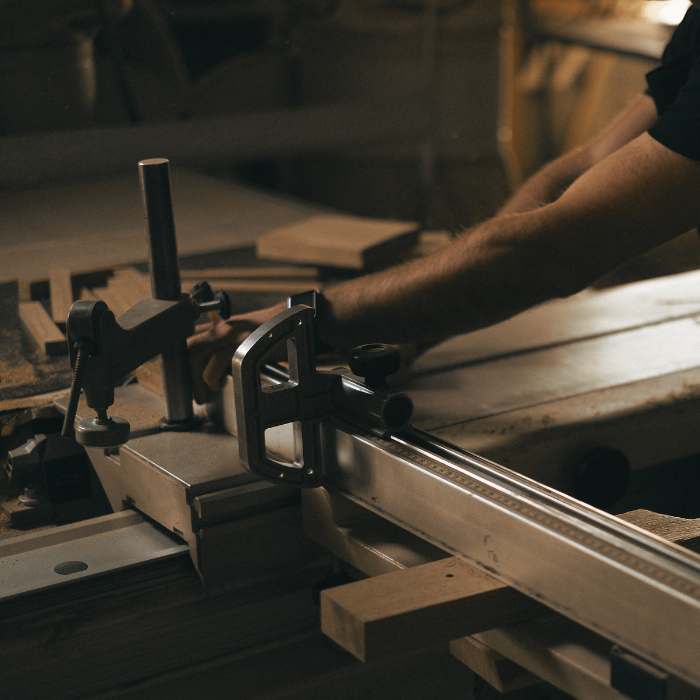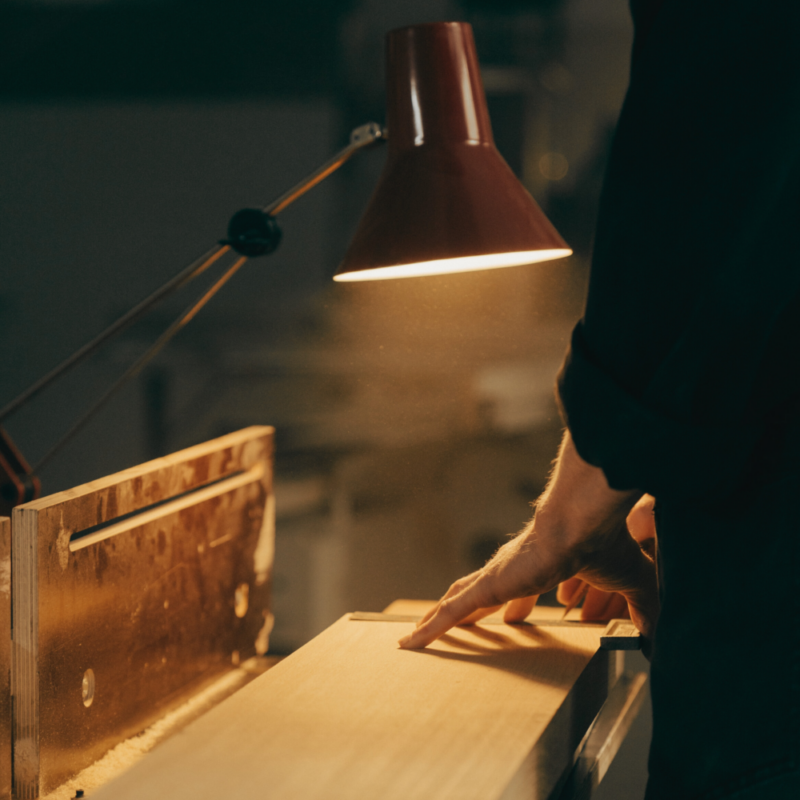
Table of Contents
If you were a Boy Scout or a Girl Guide in the 1960-70s, you likely learned how to light and keep a fire going. Today, unless you live in a remote area or grew up with a working open fire, the chances are you don’t know how to light a strong fire, and then keep it alight. Knowing how to keep a fire going is essential for anyone wanting to enjoy a stress free stove or open-fire experience. It’s all about setting the fire correctly and then allowing the correct air flow to keep the burn going.
But what if you weren’t a Scout? And what if you grew up in central London with an Electric Fireplace? And now you’re tasked with lighting a fire without matches or kindling and in full panic mode?
We’ll look at the different ways to easily make and keep a fire going in your fireplace, Bear Grylls style. We’ll then look at some FAQ’s including the up to date clean air regulations imposed on those still burning coal and the alternatives available for homes that love a real fire but don’t want all of the faff.
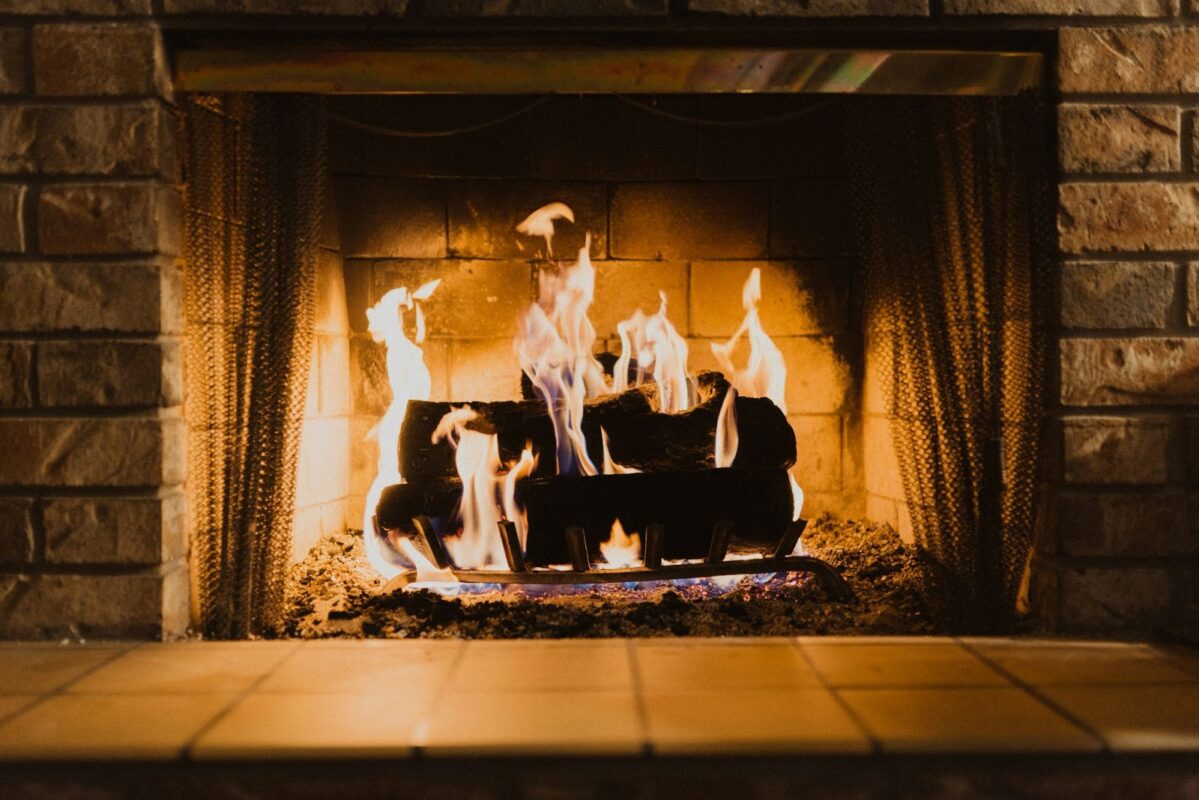
How to Light a Fire in a Stove or Fireplace
Laying a real fire or setting up your wood-burning stove isn’t as easy as you expect it to be. However, it’s a critical step on the path to keep a fire going. If you follow this advice and with some forward planning, I’ll have you and your log burner sorted in no time.
When looking back at the origins of fire, we must agree with historians that fire is one of the most influential forces on Earth. The ability to set and keep a fire going has long been considered a defining indicator of intelligence that separates us from the animal kingdom.
We need plant life to provide a fuel source, but vegetation won’t ignite unless oxygen levels in the atmosphere are between 15% and 21%. Without enough oxygen, you won’t be able to start and keep a fire going.
You might be wondering why we need to know this stuff. The answer is, we don’t. But I truly believe starting a fire is an ancient and primal instinct, it links us to our furthest ancestors and it should be treated with respect.
Light a Fire in a Stove or Open Fire (The Easy Way!)
If you’re lighting your wood burner or open fire for the first time, don’t worry. I’ll cover the steps to get your fire lit and keep a fire going. First, I’ll list the materials you need and how to do it safely and efficiently. Then i’ll give you some pro tips for on how to maintain and keep your fire going so you can enjoy the benefits of your wood-burning stove all year round.
The firefighting experts in the scouts or cubs often talk about top-down and bottom-up fire lighting, but in reality, it makes no difference which way you build the fire to keep a fire going. You can start from the top or from the bottom. Both offer similar results. I personally prefer to build top-down as this method produces less soot and offers a better air supply; this, in my opinion, makes the logs last longer.
Firstly, keep in mind that if you have a stove, it might have a unique set of requirements, so as always, the first step is to check the manufacturer’s instruction handbook before you get started. Once you’ve done that, follow the next 5 steps!
Step 1: Gather the correct materials
To light your fire, you need the following items:
- Kindling – Kindling is a easily combustible material for starting your fire, including any small pieces of dry wood, twigs, or untreated wooden offcuts – pretty much anything that ignites easily can work as kindling.
- Logs – to start and keep a fire going, you will need larger logs. Make sure you use kiln-dried, well-seasoned wood or a mixture with less than 20% moisture content.
- Long matches or fire igniters – you’ll need these to light the fire. If you can, go for the longer matches for safety.
- Newspaper – while not always necessary, I’ve found paper can help test the draw before you light a fire then double as an igniter if you don’t want to use firelighters.
- Firelighters – manufactured specifically to start and keep a fire going, firelighters contain kerosene and a binder, typically a urea/formaldehyde resin, water, and an accelerant emulsifier; some use a colouring material, but most are white.
Step 2: Open the damper (if you have a stove, if you don’t, skip this step entirely!)
With all the materials gathered, ensure your wood burner is ready to light. Do this by ensuring the damper is open. Your damper is a metal plate fitted on a spindle inside your stove flue system, which can be rotated by a small handle outside the pipe to reduce the adverse effects of a strong updraught and moderate the fire’s pull or draw.
The damper is typically located on the top or front of your stove; It’s a lever or valve that you can easily open. Check your manufacturer’s handbook if you’re unsure of the location. The damper moderates the flow of air into the stove, ensuring it’s wide open when you lay your fire is essential. The damper provides enough oxygen to light and keep a fire going.
Keep the damper open while you start your fire and once the fire is established, you can adjust the damper to control airflow and heat output. Opening the damper will increase the heat output. and if you want to subdue the fire and reduce the heat output, close the damper.
Some stoves have a second damper. The second damper is typically located in the flue or the pipe that goes up the chimney. If your log burner has two, it’s important to open both when lighting your fire.
Step 3: Prepare the burn area
Place a couple of firelighters (no more than two) and some scrunched-up newspaper balls on the top of the ash pan; Look for the part where the ash that falls from the fire is collected on the base of the furnace. Putting the kindling on top of the ash pan ensures correct airflow, allowing the kindling to catch fire easily.
Pro Tip: When assembling the kindling, make sure you use small pieces of kindling that are dry and easy to light. It’s important to make a loose pile with enough space for air to circulate easily. If the pile is too tight, the lack of airflow will make it impossible to start and keep a fire going.
Step 4: Light your fire
Light the firelighters with a large match, and begin to add a few more pieces of kindling as the fire builds.
Once your kindling is burning well, arrange small pieces of dry wood around it in an A or tepee shape, creating a structure that allows easy airflow through the centre to the kindling. It’s important to place the dry wood close to the kindling so it catches fire, but not so close that the small wood pieces smother the fire.
Use small pieces of kindling that are dry and easy to light. You can slowly build your fire by adding slightly larger pieces of dry wood (not logs yet!) once the kindling is burning completely alight.
Pro Tip: Remember to use a fireguard as coal and logs can spit burning fragments onto the floor, causing damage.
Step 5. Add your logs to your fire
Finally, begin to add some larger logs to your fire, but leave enough space between them for the all-important air circulation. Take your time – you can always add more logs to the fire once everything is burning well. Adding a mix of larger logs provides a more sustained heat output and is a solid way to keep a fire going.
Time to enjoy your fire.
Final Pro Tip – Stagger the logs when you place them in the wood burner. Staggering will ensure that the fire has an equal chance of reaching all of the logs which in turn helps to keep a fire going for as long as possible.
How to Start a Fire Without Matches and Kindling (The Hard Way!)
Obviously, to light and keep a fire going without matches or kindling is more of a survival thing best saved for TV shows, but if you find yourself in the wild (or a Sunday night when nothing is open!), here’s how to make the best of a bad situation. Knowing how to start and keep a fire going with what you can find in nature (or your cupboards) could be the crucial difference between toasted marshmallows and grumpy kids.
You can use wire wool and batteries. Using a 9-volt battery or 6 AA batteries and some fine steel wire wool is one of the most effective ways to start a fire without matches. However, if you’ve forgotten to buy matches, what are the chances you’ve remembered to buy steel wool and a battery? The chance you will find these items lying around is not high, but anyway, here’s how you start and keep a fire going with wire wool and a battery.
Simply hold the battery’s terminals to steel wool; the wool will ignite (eventually). Make sure you have kindling ready to add to the flames. I wouldn’t let your children try this as it’s extremely dangerous.
The next option is a magnifying glass, learning how to keep a fire going with this method can be both educational and practical but again, unless you’re Sherlock Holmes, it’s unlikely you walk around with a magnifying glass in your pocket, but for the sake of the article, here’s the information you need to light and keep a fire going using a magnifying glass.
A magnifying glass uses the sun’s rays to focus the rays onto a pile of dry kindling or twigs to ignite a fire. Hold the magnifying glass away from the kindling at an angle so the sun’s rays pass through the lens, igniting the kindling. This may seem like a gimmick, but actually, it works.
The magnifying glass method isn’t quick; it can take some time and requires a steady hand and a sunny day, but if you’re desperate for outdoor entertainment, then this might be the answer.
So now you know what to use if you don’t have matches, but what if you have matches but no kindling – what then?
There are many ways you can set and keep a fire going without kindling, including newspaper balls or toilet roll tubes and lighting them under the firewood. If you don’t have firelighters but you have a bag of salt and vinegar crisps handy, they can act as an accelerant, burning for a good three minutes. Actually, crisps that contain a high oil content burn better still – they might smell a bit chip shoppy, but you will be able to keep a fire going without kindling.
What to Avoid When Starting a Fire
Adding Wood Too Quickly
It’s a really bad idea to rush this process. If you want to keep a fire going, then slow and steady wins the race. If you start dumping on huge logs too quickly, you’re going to suffocate the fire. The big logs are generally too bulky and will restrict that all important air flow, causing the fire to go out.
Using Gasoline
terrible idea!
Picture the scene, you’ve run out of firelighters and as you’re rumbling around the house you stumble across some gasoline, just put it back, don’t even think about it!
Gasoline should never, ever be used to feed a fire, it’s unpredictable and frankly, dangerous. It’s even worse in a domestic setting as the fumes can be toxic. If that’s not enough to put you off, it won’t even create the required circumstances to keep a fire going, the gas will just burn off, leaving you back where you started.
Leaving Your Fire Unguarded
I recommend always using a fire safety guard (something like this on Amazon would work well). Fire guards are designed to make the fireplace inaccessible by children, pets and other people who don’t know what they’re doing!
Fireguards obviously don’t keep a fire going, but safety is an important consideration too. Utilising a really useful screen design fireguards protect fire or stray sparks getting onto a nearby oak fireplace beam, rug, carpet or curtains.
Using Wet or Green Wood
Avoid using wet or green wood as it produces more smoke and less heat, making it difficult to start and keep a fire going. While it may be tempting to purchase wet or green wood due to its cheaper cost, it’s actually a false economy. Wet wood takes longer to ignite and burns inefficiently, which means you’ll end up using more wood to achieve the same level of heat as dry, seasoned wood.
Also, the increased smoke will lead to a build-up of creosote in your chimney, greatly increasing the risk of chimney fires, meaning you’ll need to clean your stove more often and eventually get an expensive liner replacement.
Wood fires can be an extremely sustainable heating choice, but only if you do it right!
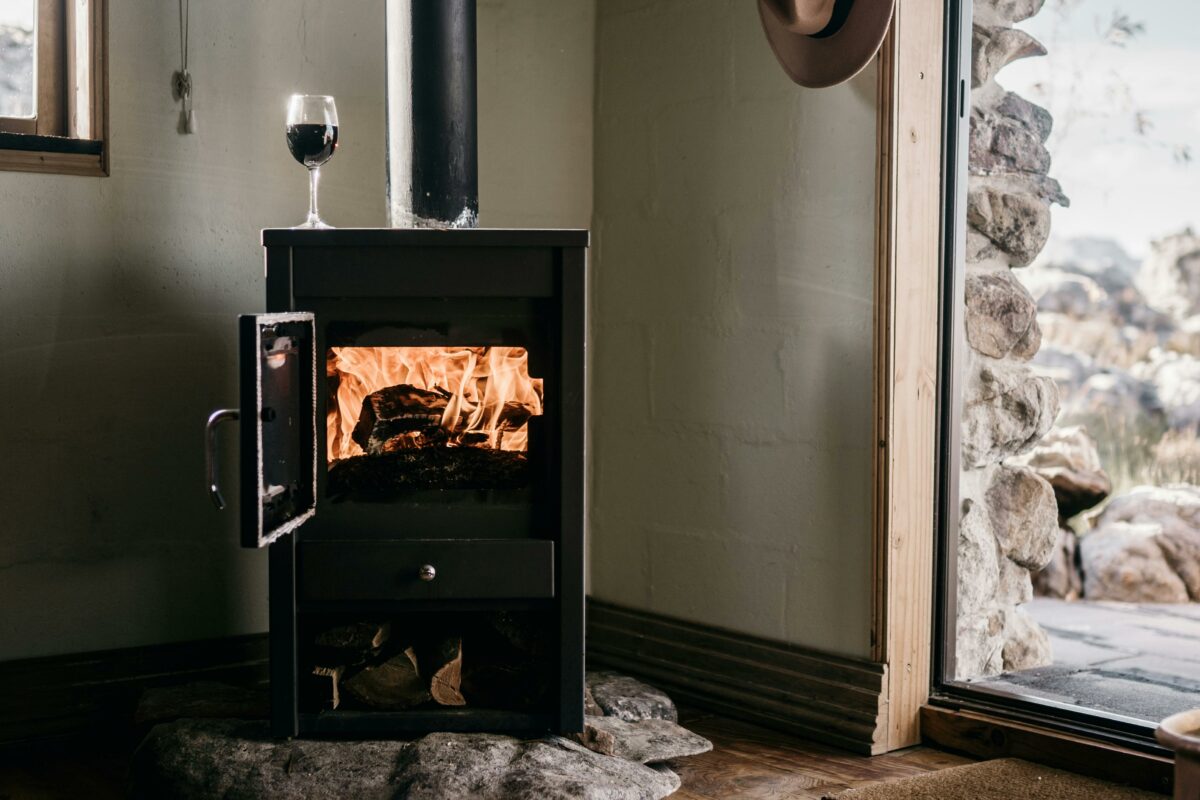
How to Keep a Fire Going in a Fireplace or Stove
Use the Correct Fuel
As previously mentioned in the “what to avoid” section, it is essential you find a well trusted coal or log merchant. They are experienced and will ensure you are using the correct solid fuel to keep a fire going in your open fire or stove. If you choose to use wood, a good quality supplier will make sure it is well seasoned or dried, this is of course unless you intend to source your own wood and season it yourself!
Ideally your logs should have a moisture content of less than 20%. If you are burning kiln dried timber off cuts with a moisture content of less than 10% try to mix this with air dried, seasoned logs to raise the moisture content of the load, this will maximise the efficiency of the fuel and therefore the heat output.
There is remarkably little difference in the calorific value by weight between tree species once the logs are well seasoned however there is a difference by volume. One cubic metre of hardwood will have a much higher calorific value (or potential heat output) than the same volume of softwood. Keep this in mind and burn softwoods in the autumn and spring and on milder days when not so much heat is required and save hard woods for the depth of winter. If you want to ensure you keep a fire burning with the right type of logs, make sure your firewood supplier is Woodsure certified.
Load Logs for Maximum Efficiency
To help keep a fire going, you can carefully control the heat output and gain the most from your fuel by the way you load the fire. A small, loosely stacked, criss-crossed load of smaller logs will provide plenty of space for air to enter the fire to promote a faster combustion and burn hot and quick. This is perfect to take the chill of the space without overheating the room.
Pro Tip: In warmer weather plan to keep your fire going efficiently by orienting the fuel from east-west, (from one side of the fire grate to the other) and in colder weather, lay your logs north-south (i.e. front to back). When loading the logs east-west, the wood breaks down more slowly as the combustion air reaches the fuel at the sides of the logs, giving you a longer lower temperature burn ideal for milder weather. This will both save you fuel and help prevent the home from becoming overheated.
By loading the logs north-south the heat and flame can penetrate the fuel more easily giving you a higher more consistent heat output.
Ensure you Get the Most Heat from Your Fire
To ensure you can keep a fire going, you should make sure you’re getting the most heat you can from what you have at your disposal. When refuelling a wood fire, pull the embers or charcoals from the back of the fire to the front. This also provides the ideal opportunity to remove ash if need be.
Do remember to keep a fire going, particularly a log fire, it’s always better to lay it on a half inch bed of ash, but don’t let this build up over two inches. If the fire has died right back, it may be necessary to add more kindling to rejuvenate it before placing four or five logs on the fire. If there are plenty of hot embers and you time it right, the logs should catch immediately.
Once the wood is beginning to char you can regulate the air intake to help control the heat output and the length of burn you want. It may be necessary to reduce the air intake to your stove or insert in stages depending on the wood and the appliance. If you are using an open fire it may be necessary to poke the fire to introduce more air or add additional kindling to keep a fire going.
Never let logs smoulder with no flame. This just wastes fuel as the heat is contained within the smoke as volatile gases, which if left un-burnt will potentially damage your chimney, appliance and add to the problem of air pollution.
Check to See if Your Fire is Performing Well
There are plenty of visual signs which will help to determine how your stove or fire insert is performing. Keeping tabs on how your fire is doing is a great way to keep a fire going, you can spot issues and act fast.
When wood is burning, flames should always be visible until the fire reaches the final stage of burning. If you have fire bricks within your stove or a fire insert firebox, they should be tan or biscuit in colour, not stained black with tar and soot.
The viewing glass door on a modern stove should be clear (or maybe a little hazy), but again, never black. Any exposed metal within the firebox of the stove or fire insert should be light or dark brown in colour and never black and shiny.
Another great indication of how your fire is performing can be gained by a brief trip outside to view the chimney. You should expect a little white smoke to be present immediately after re-fuelling otherwise a properly burning fire should produce little or no visible smoke plume.
Understand the Complete Cycle of a Fire
Don’t fall into the old trap of adding one or two logs an hour to a fire in an attempt to maintain a consistent heat output. Wood fires burn best in cycles. The cycle starts when you refuel the fire pulling the hot embers forward placing the new fuel behind them and watch the logs ignite. The cycle ends when the fuel is reduced to a bed of charcoal embers.
You simply cannot keep a fire going expecting it to give you a perfectly consistent heat output. The heat output will vary depending at what stage of the burning cycle the fire is at. The most heat is given off at the pyrolysis stage, where the cellulose within the wood breaks down releasing volatile organic gases that ignite releasing the heat contained within the fuel as heat.
If somebody is at home throughout the day, they can keep a fire going! It is more appropriate to use a short burning cycle. But it is possible to extend the time of the burn cycle by packing larger logs close. To maximise the burn time once a large load of fuel is in place, open the air intakes or draft plate for 15-30 minutes (or until the outer logs have a layer of charcoal on them) then close the air intakes or draft plate in stages until the required burn rate is obtained.
The outer layer of charcoaled logs will insulate the rest of the wood and helps arrest the release of the woods combustible gases prolonging the burn time. Again, to keep a fire burning efficiently there should at all times be visible flickering flames and wood should never be left to smoulder unless in the final stage of carbon burn. Make sure you keep a fire burning, to leave a fire smouldering is not only polluting the atmosphere, but a gross waste of fuel!
How to Keep a Fire Going Overnight
It is very hard to keep a fire going all night in a stove or open fire, this comes down to the fact that wood burns very fast. To keep a fire going all night you need to make sure you follow each and every step correctly. This should allow you to have a nice long sleep and not worry about having to wake up early to keep it alight.
First of all, you must make sure if you plan to keep a fire going throughout the whole night, it does not create a hazard and is completely safe to do. If so, follow the steps below!
- The first thing that needs to be done is, select the correct wood for the fire. The wood will need to be hardwood chunks, that are a decent size so that they are able to fit in the stove and not leave many air gaps.
- You will then need to build up a decent bed of ash, so you will need to run your fuel stove for a few hours beforehand. This will be a lot easier after you’ve had 4-5 fires before.
- Next step is to load up your stove with your wood as much as you can making sure it is still safe.
- Make sure the fire is getting a good amount of air right up until the fire has stopped smoking and has got up to the correct temperature. (It may be necessary to open the vent for a short period of time to minimise the smoke and allow the logs to get charred and burn efficiently.)
- If your stove contains a removable ash pan, it will help the fire burn slower if you spread the ash from it onto the top of the fire. This is messy, but it works.
- Just before you go to bed, do not forget to check your vent is closed. Bring in a few pieces of medium sized and large sized logs to dry overnight, ready for use in the morning.
To keep a fire going all night is a difficult ask, but following the above will give you the best chance! If you are awake early, the fire may still be alight. If so, using a firelighter will really help get the fire roaring again. Refill it with some of the medium sized pieces of wood first, then add the larger logs on to keep a fire going again, then open the vents completely.
There are definitely some caveats, If the stove that is being used is very small then it will not be able to last the entire night. If it is windy it is almost impossible to keep a fire going overnight, the weather needs to be calm and not freezing cold.
Wood Burning Stove Advice and FAQ’s
Wood Burning Stove Regulations
New regulations in 2022 mean all new wood burning stoves must restrict their carbon emissions to an agreed level to help meet carbon-neutral targets in 2030. While old log burners can remain operational, new stoves must be more efficient if we are ever to reach these targets. These regulations also impact how to keep a fire going efficiently while adhering to environmental standards.
All wood burning stoves must meet UK building regulations. Before you can even think about keeping a fire going, there are specific building regulations about how the stove flue is fitted, along with the fireplace hearth’s size, and the stove’s distance from combustibles. Complying with the regulations will affect the type of stove that is suitable for your property. A breakdown of the regulations are as follows…
A wood burning stove must stand on a non-combustible hearth (a hearth made of stone, concrete or brick) extending at least 230mm in front and at least 155mm at the sides. If the hearth is on a floor that might catch fire, it should be over 250mm thick. Any wood burner with an output of 5kws or higher requires a vent that remains permanently open. If you own a listed property, the installation regulations can be more complex and hiring the correct person is more important than ever.
I don’t think it’ll come as a surprise to anyone that coal is not really a green option, so what else can you do if you want an open fire but don’t want to use coal?
Eco-friendly and Sustainable Fuel Options
To make a real fire more eco-friendly from a clean and sustainable energy efficiency point of view, you must consider your fuel type. Coal, a fossil fuel, produces good heat but is a non-renewable source of pollutant energy. It’s far better to burn wood, especially waste wood, which is a renewable natural resource that can be replenished.
Installing a wood burning stove is a good way to dispose of waste wood. With some ingenuity and time, it is possible to collect enough waste wood to keep a wood burning stove going for months by collecting and drying fallen branches (or make friends with a carpenter). It is a good idea to use only raw wood, as treated wood can be toxic.
If collecting wood sounds like hard work, it’s possible to buy eco-friendly, recycled, sustainable fuels such as compressed waste paper blocks. These blocks can be burned in an open fire and in some stoves, they are pretty efficient and keep a fire going well, but it is best to check with the manufacturer of your stove first to see if compressed paper (or other alternative fuels) are suitable for use in your wood burning stove.
Multi-fuel stoves are an option, and should you be able to burn alternative fuels without a problem. This switch can also affect how to keep a fire going sustainably.
What are Multi-Fuel Stoves?
Multi-fuel stoves, as the name suggests, are designed to burn a selection of solid fuels, not just wood. Not all fuels burn in the same way, which is why a traditional wood burning stove or log burner cannot burn coal. Keeping a fire going is a little easier with a multi fuel stove as they are versatile enough to handle most types of solid fuel. Multi fuel stoves are a solid option if you like to switch up your fuel options from time to time.
Clean air regulations
In the UK, if you want to keep a fire going without getting into trouble with the local council getting involved, you have a responsibility for meeting air quality values set at government level. The Department for Environment, Food and Rural Affairs (DEFRA) wants to educate the public on the disadvantages of burning non-compliant fuels in wood burners.
Defra has introduced new regulations for emissions; under the new Environmental Improvement Plan 2023, wood burning stoves in a designated ’Smoke Control Area’ (SCA) can emit up to 3 grams (g) of smoke per hour, down from the previous 5g. The updated regulations are part of the government’s effort to reduce air pollution and meet 2030 targets.
How do you know if you’re in a ’Smoke Control Area’?
It’s easy to find out if you’re in a SCA by contacting your local council to find out if you live in a smoke control area, (the .gov website has a handy tool to search for your local council here).
“HELP!!” – Fire Troubleshooting
Why Won’t my Fire Start or Catch Properly?!
If you’re struggling to get your fire started or catch properly, there are a few potential issues to consider. First, ensure you are using dry, seasoned wood, as wet or green wood can be difficult to ignite. You should also make sure you have enough firelighters, paper, kindling and smaller pieces of wood to help the larger logs catch fire.
Proper airflow is crucial, check how you have arranged the logs and kindling is in a way that allows air to circulate between them all. Lastly, make sure that your chimney or flue is open and clear without blockages to allow for proper ventilation.
Why Does my Fire Keep Going Out?!
A fire that keeps going out can be frustrating. To keep a fire going, again, ensure that the wood you are adding to your fire is dry and properly seasoned, as wet wood is a common issue people face, wood that isn’t dry enough tends to smother the flames.
You’re probably sensing a theme here, but make sure there’s adequate airflow by arranging the logs in a way that allows air to circulate around them. You cannot keep a fire going without airflow. Using smaller pieces of wood initially can help the fire build enough heat to sustain larger logs.
Regularly adding wood and stoking the fire to maintain oxygen flow is essential. If your fireplace or stove has a vent, adjusting it to control airflow will also help keep a fire going.
What’s With All the Smoke?!
If it smells smoky in your home or you have excessive visible smoke from your fire, it can be caused by several factors. Proper ventilation is crucial, so the first thing to check that your chimney or flue is clear of obstructions. If the flue is obstructed, it’ll cause draw issues and smoke will enter your room.
The way you arrange your firewood also matters; if the pieces are too large or packed too tightly, they can smolder and create smoke (remember, a fire should never smolder, unless you’re winding it down).
Start with smaller kindling to build a hot fire, then add larger pieces as it grows. Adequate airflow will help keep a fire going without producing excess smoke. You may also need to open a window slightly to improve room ventilation.
If you have a fireplace insert or wood stove, check the seals and gaskets to ensure they’re in good condition. Sometimes a smokey smell indicates a backdraft issue, so having a professional inspect your chimney might be necessary.
I do hope this article on how to start and keep a fire going has been helpful, it’s my longest and most in depth article (so far!) and while it’s not intended to be 100% serious at all times, i’ve tried to keep things both helpful and informative!
If you have any questions, have your own tips on how to keep a fire going, or would just like to suggest some changes, please feel free to comment below.

